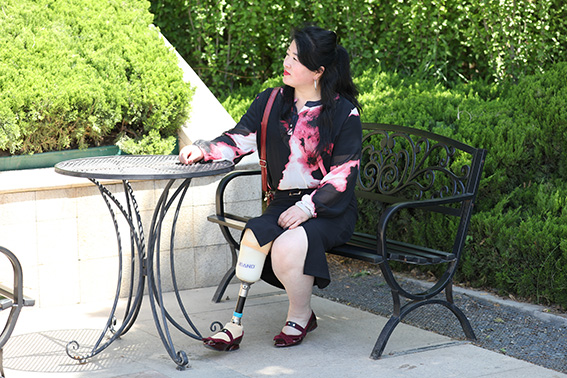News Center |
The main function of the prosthetic socket is to receive the residual limb and effectively transmit the relevant force to the distal part of the prosthesis, which is the link between the human body and the mechanical system. Therefore, the suitability of the prosthetic socket refers to the state of mutual cooperation between the prosthetic socket and the residual limb. Whether the prosthesis is good or bad depends on whether the socket is suitable.
When it comes to prosthetics, the first thing that may come to your mind is what brand the prosthetic product is. For example, a AK amputee will ask whether the knee is hydraulic or pneumatic. What kind of foot plate has the best function.

In fact, the core part of the prosthesis is the prosthetic socket. A good prosthesis also needs to be equipped with a good socket to be able to use the best functions of these prosthetic accessories.
Comfort is very important for the prosthetic socket, and the stability and controllability of the prosthetic socket cannot be ignored. Among them, stability is particularly important, which can improve the patient's use experience. Abnormalities in use in amputees can be avoided. Of course, the prosthesis is too short or the prosthetic accessories are loose and so on. However, if the above problems are excluded, if the amputee patient uses it improperly, it will also affect the use of the prosthesis.

The full contact prosthetic socket retains the advantages of the sorbent prosthetic socket and eliminates its adverse effects. The entire surface of the residual limb, especially the end of the residual limb, is in full contact with the socket. The end of the residual limb is subjected to axial pressure from the bottom of socket. During walking, the blood is sucked to the end of the stump by negative pressure when swinging the leg, and the bottom of the prosthetic socket compresses the stump to pump the blood out during the load-bearing support. The blood flows in and out alternately at the end of the stump, which promotes the blood circulation of the stump.
It is very simple to check whether the socket has achieved full contact and stump load bearing. Under the load-bearing support phrase, the amputee can judge by detecting the gap and pressure between the end of the residual limb and the bottom of the prosthetic socket through the air valve hole, or by feeling whether the end of the residual limb is squeezed.
To achieve contact and load-bearing of the stump, the stump needs to be covered with good soft tissue, and the shape of the prosthetic socket also needs to fit well with the stump. This requires relatively high amputation technology and prosthetic assembly technology.

The currently commonly used prosthesis wearing method has a certain impact on the full contact and stump load-bearing socket. Today everyone wears prosthetics with socks and valve holes, and the soft tissue is pulled toward the stump. The load-bearing capacity of the stump is weakened. Only by filling the air valve hole at the bottom of the prosthetic socket with a special air valve can full contact be achieved in the true sense. If there is no good method of wearing the prosthesis, the weight-bearing capacity of the stump cannot be fully utilized.

Many amputees and prosthetics technicians don't pay enough attention to this problem. They fail to recognize that full contact and stump weight bearing can affect the health of the amputee's stump and even the entire body. In order to reduce the troubles caused by prosthetic fitting, prosthetic fitting technicians simply suspend the stump in the prosthetic socket, rather than pursuing the goal of full contact and stump load-bearing. The amputees readily accepted because they felt no abnormal sensations.

Not being pressured by the needs of amputees, technicians also lack the drive to pursue advanced technology and are technically unable to achieve full contact and stump bearing.
The purpose of full contact and stump load bearing is to not affect the arterial, venous, and lymphatic circulation of the stump and prevent nerve conduction. The non-full-contact, stump-bearing prosthetic socket will lead to chronic blood circulation disorders, causing swelling of the stump, until eczema, blisters, and chronic ulcers appear. Serious skin changes are prone to occur at the mouth shape of the prosthetic socket.
In the initial stage of prosthesis, the soft tissue at the end of the residual limb will atrophy, thereby reducing the pressure on the end of the residual limb from the bottom of the socket. In the initial stage of prosthetic assembly, the bottom of the socket should be adapted to adapt to the shape of the end of the stump, so as to achieve the maximum load-bearing of the stump.
YOBAND Group adopts the international production standard for the production of the socket, which is synchronized with the world's advanced prosthetic technology in the United States, and provides customers with the basic configuration of the full-contact socket, which has completely changed the domestic prosthetic socket manufacturing process.
Copyright © 2015 USA-YOBAND. All Rights Reserved 沪ICP备09003269号